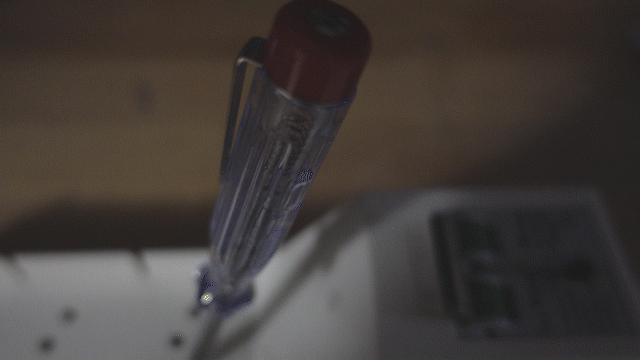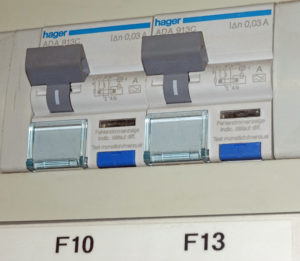Electrical Safety Issues
| Part 8 of the build documentation. You may want to check out the intro first. |
Electrical Safety
Before I can talk about wiring the machine, including the power supply and grounding (or “earthing”), one must be aware of the mortal danger of mains voltage.
Disclaimer: When this blog talks about safety issues it is only about some of the requirements that follow from electrical safety concerns (i.e. that the exposed conducting parts of your machine should be grounded). This blog does in no way state that the measures discussed here are sufficient to provide electrical safety required by law or by any standard. I am not a professional! If somebody finds a mistake or has further suggestion please speak up!
You yourselves are alone responsible for your own safety and the safety of others.
Counter-Productive Liability Laws?
Having said that, I find that many web sites/forums/blogs – even product sellers making a profit – avoid the topic altogether to circumvent any legal liability while being fully aware that people will still need to fill in the gaps with power supply, grounding etc. to be able to put the products to any use. If the law finds that simply not talking about safe solutions and thus letting your customers/audience hang out to dry is better than at least trying to point to some safety best practices (with due warning about limitations), then the law is bad and will result in more people harmed. I have searched the web and the local (Swiss) regulation for guidance and it seems scarce, contradictory, obscure and vague to me. So what I try here is to at least give some pointers.
What is the problem?
When you touch a conductor with high voltage and at the same time some other part of your body is in contact with a second voltage potential i.e. another metal part or wire or simply the floor, a current will flow through your body.

Video: Body as a conductor with an AC voltage “phase” probe. One bare foot on the concrete floor of the basement, then intermittently lifting it up to stand on the other foot with a slipper :)
The body, essentially being filled with electrolytes is a very good conductor. Only the skin has a bit of resistance. It varies a lot but 1kΩ (only!) is the order of magnitude to take into consideration. Even a few dozen milliamperes will possibly kill you. AC at 50/60Hz is amplifying the danger by a factor of four to five compared to DC. When you grab a conductor it will seize up your muscles. Above 6 to 9mA AC you will not be able to let go; 120V surprisingly being more dangerous than 230V, because the initial jolt is less likely to propel you away. Your heart can seize up (ventricular fibrillation) starting from only 27mA when your left arm/body side is involved.
When I looked up these numbers for this post, it put a new perspective on Ohm’s Law for me.
Your Home’s Electrical System Needs To Be Safe
Electrical Safety is built up from the ground, literally speaking. If your home does not have proper electrical wiring and grounding it will (to my knowledge) not be possible to power your machine safely. You need a residual-current circuit breaker (RCCB) also known as ground fault interrupter. In Switzerland you must have a certified installation with 30mA trip point RCCB, to be allowed to do simple electrical installations yourself.
For a testing period I play it double safe by adding a more sensitive 10mA outlet strip:
It is so sensitive that it will usually trip a few times just from charging the EMI suppression caps on the power supply (when it was switched off for some time). The breaker also latches off when I cut the power to it, adding another safeguard (this unit is ~30 years old, new ones will probably look different).
Why Does This Matter For Wiring The Machine?
If a live wire is connected wrongly, wiggles free or breaks and touches one of the conductive (i.e. metal) parts of your machine, it should immediately either create a short and trip the over-current breaker or the residual-current breaker. Therefore all the exposed conductors of the machine must be grounded. Imagine what happens otherwise: the metal frame, extrusions, casing etc. would be under mains voltage, practically waiting for you to touch it! Yes the residual-current circuit breaker would still trip then (if you have it!) but there are other dangers such as electrical fire hazards not covered.
In a following post I will try to sort out what this really means in terms of wiring the machine. There are other reasons and ways for and (sometimes against!) grounding, creating some conflicts. I don’t have all the answers, I will have to include some question marks…
All comment and enlightenment very welcome.




Leave a Reply